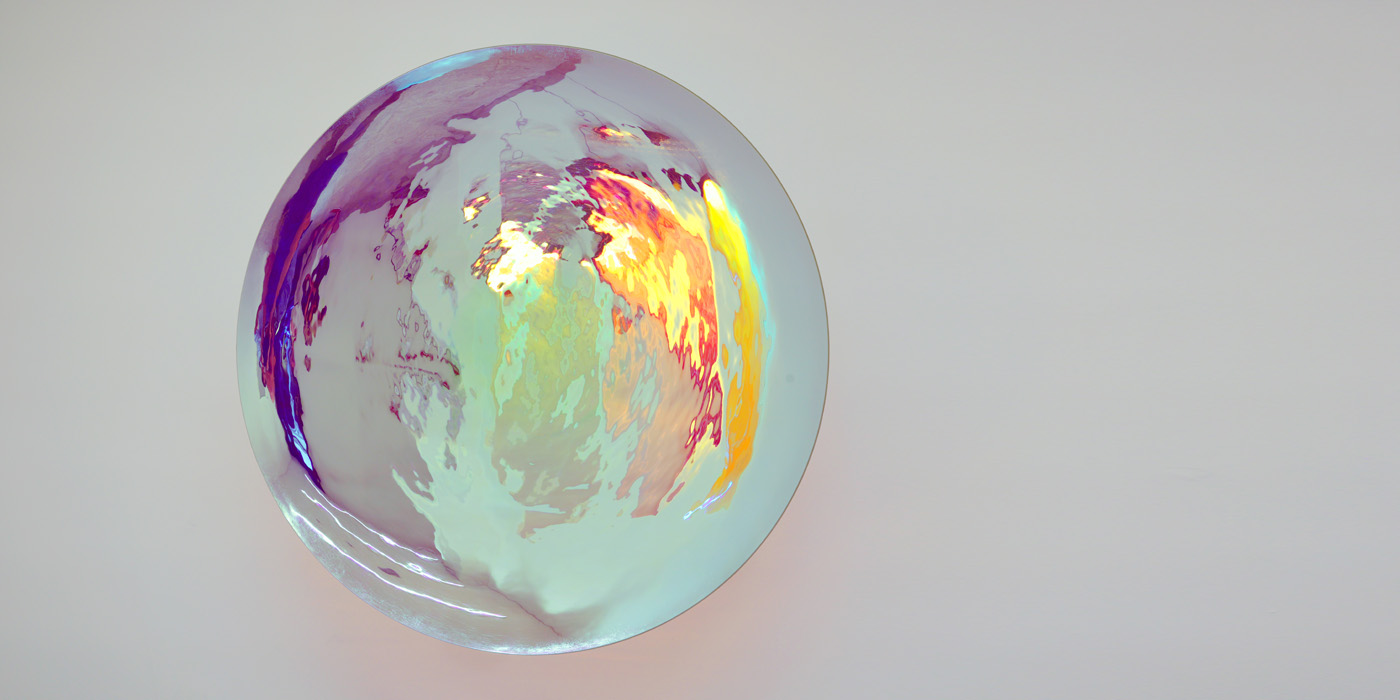
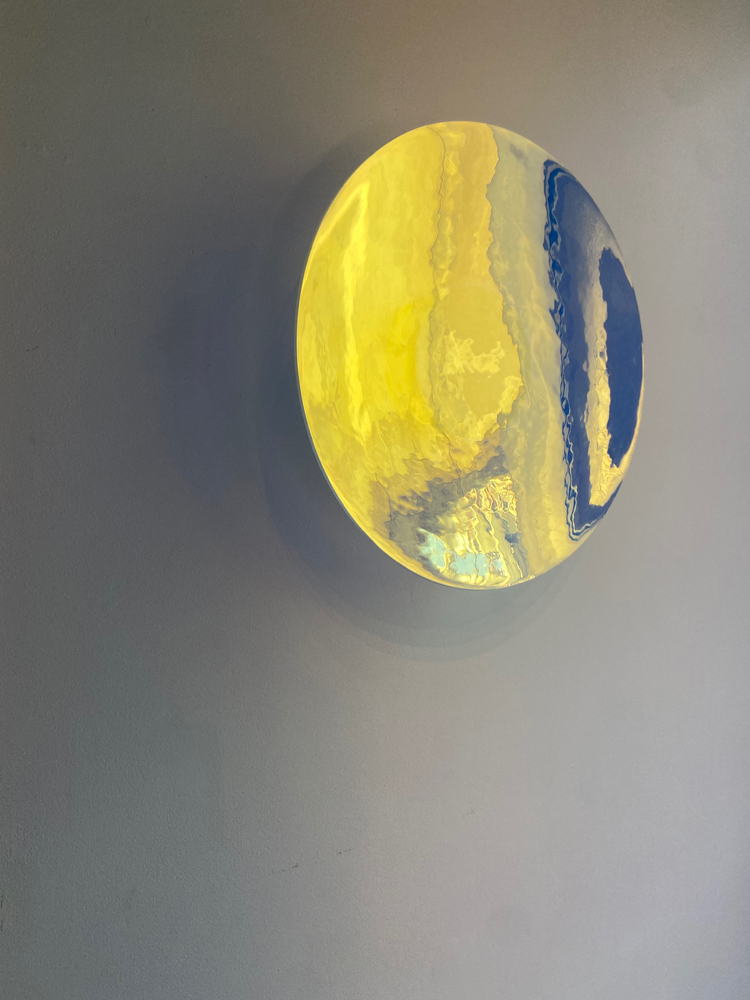
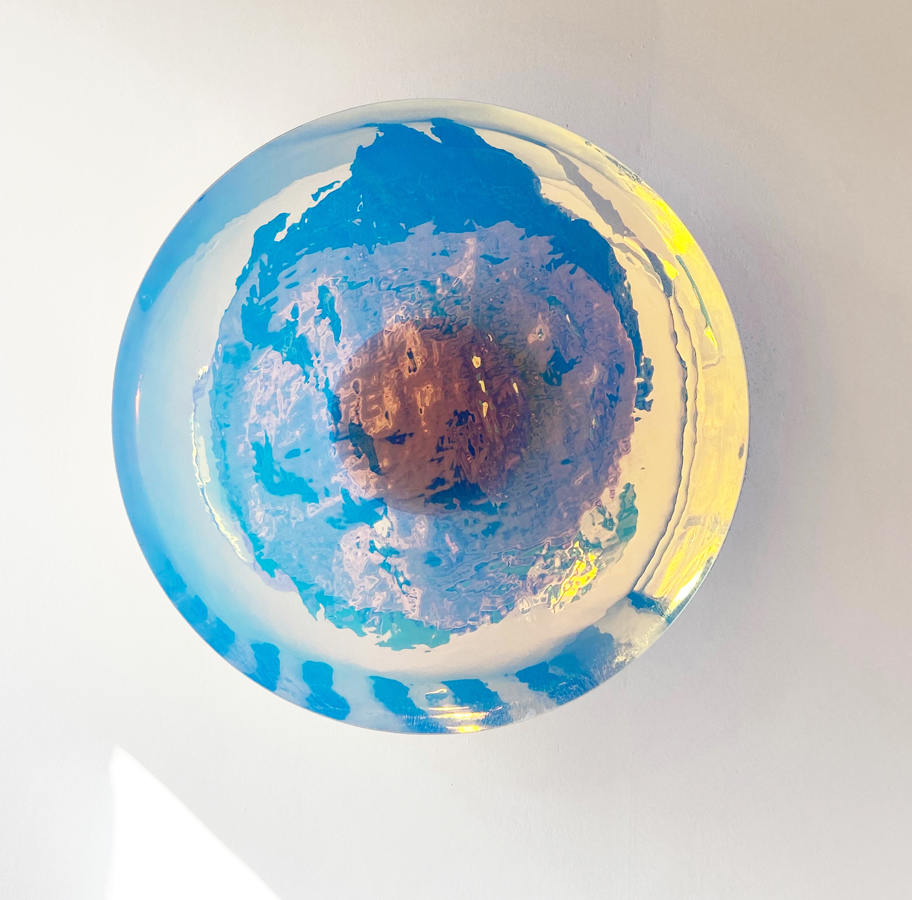
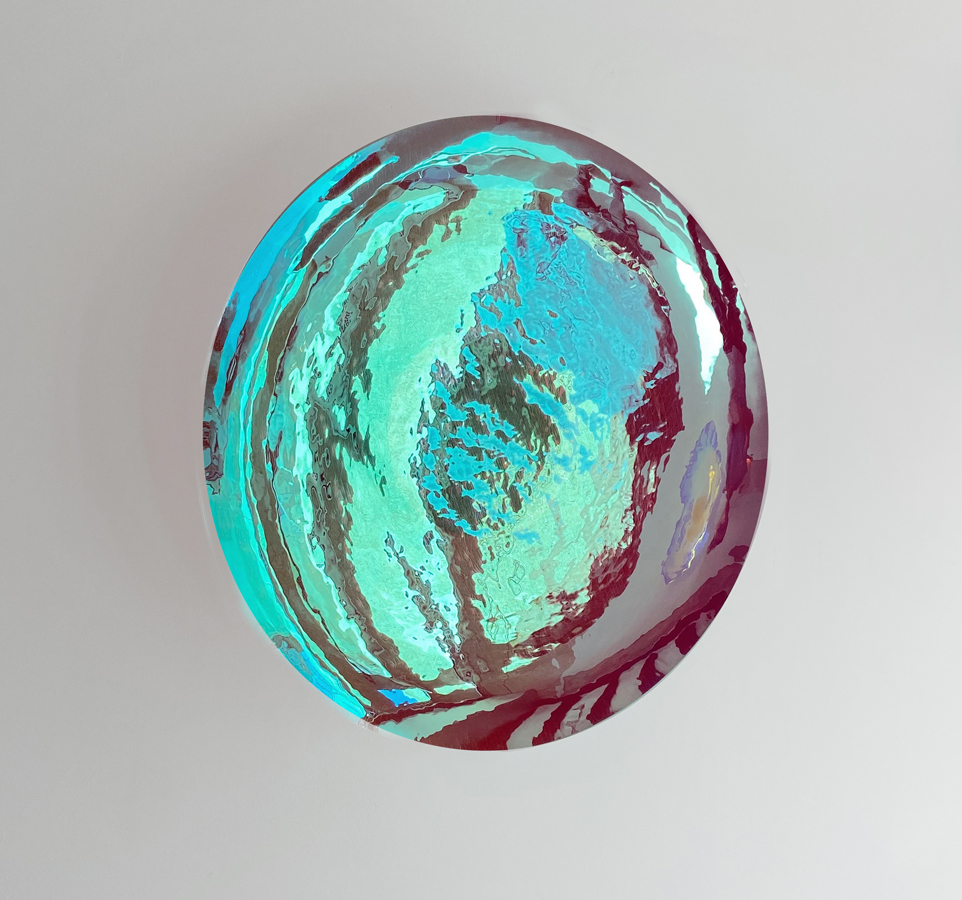
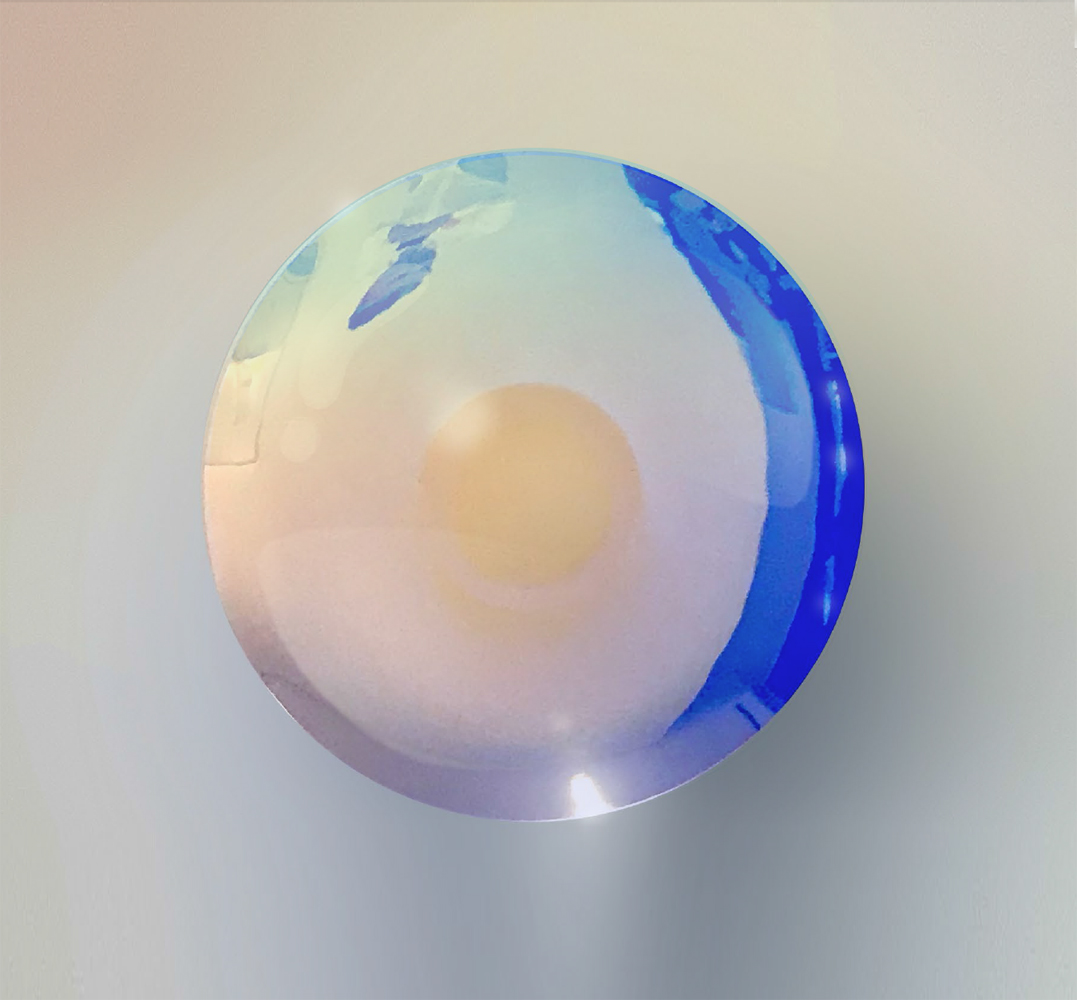
Wall Object
Ruud Groeneveld
This object in the shape of a spherical cap of different diameters captures all the reflections of the surrounding space. The multi-layered dichroic glass moulding process used generates deformations, creates cracks in the glass and forms unexpected patterns of light. The patterns, colours and transparencies change depending on the viewing angle.
Spherical cap (or part of a sphere) in moulded dichroic borosilicate glass, cylindrical support in epoxy resin.
Limited edition of 8 + 2EA + 1 prototype per colour. Available in cyan, magenta and deep green.
Large model: Diameter of glass 79 cm - Depth of glass 8.4 cm - Total depth 21.4 cm
Small model: Diameter of glass 45 cm - Depth of glass approx. 1 cm - Total depth 8.5 cm
DICHROIC GLASS
The main characteristic of dichroic glass is that it is bicoloured... one colour is transmitted when light passes through the glass, and another is reflected when light reflects off the glass.
Typically used in camera and lighting lenses, dichroic glass is produced using a unique, fully automated tempering technique.
The DICHROIC collection highlights, pays homage to and plays with the material's characteristics.
The viewer is invited to examine the different effects from different angles. Each perspective offers a new palette of colours, invites interaction and challenges perception.
To achieve the dichroic effect, thin layers of metal oxides are vaporised in a vacuum by an electron beam. The vapour rises and condenses on the surface of the glass in the form of a crystalline structure. 15 to 20 successive layers are applied to the glass to achieve the desired effect (gold, copper, silver, cobalt, titanium, etc.).